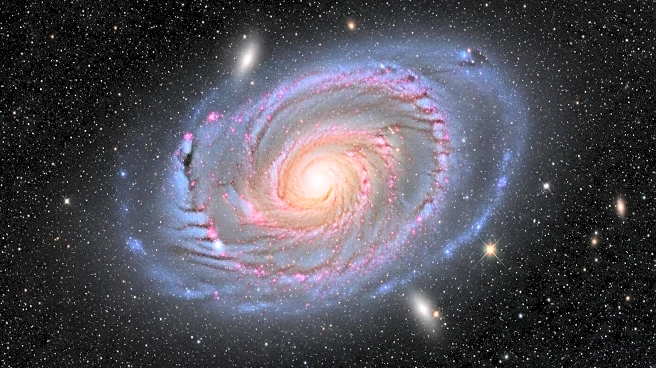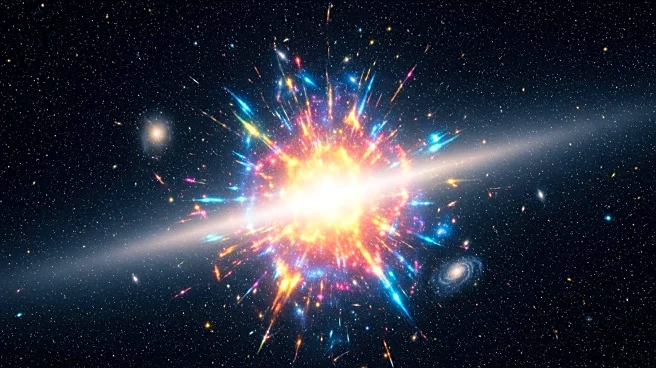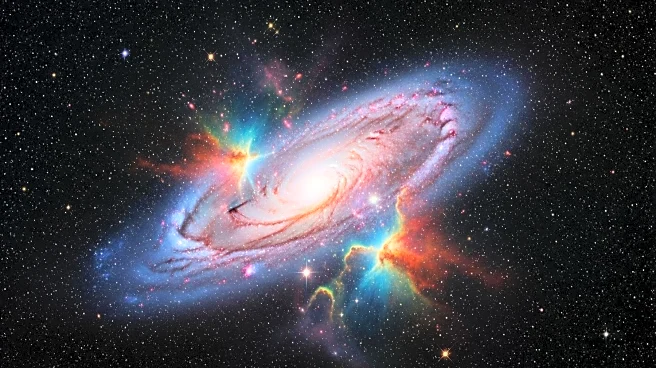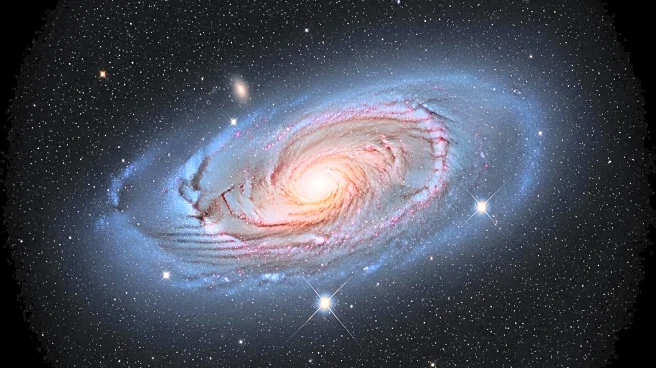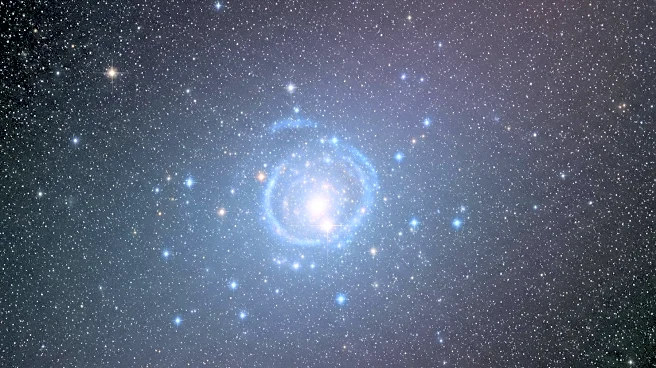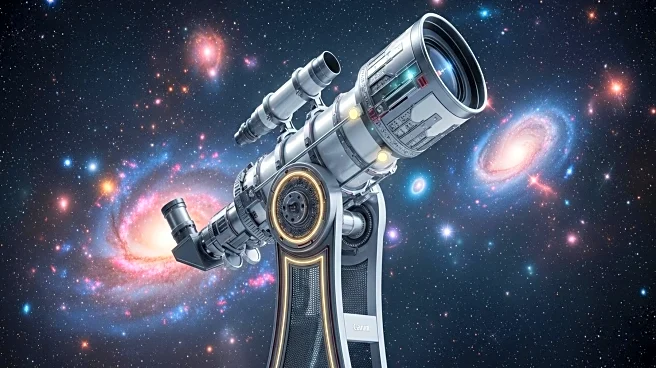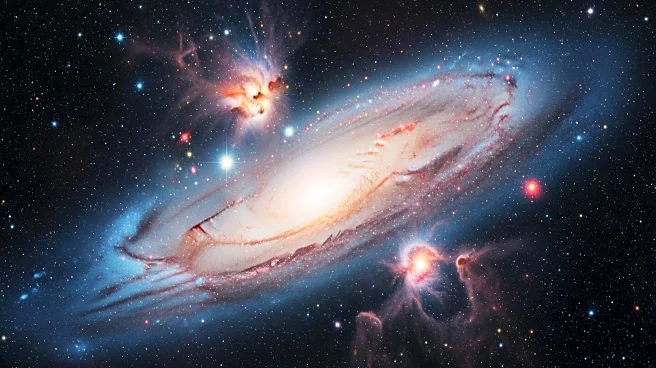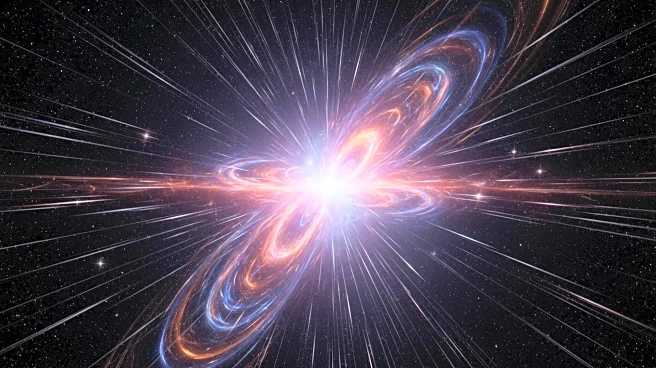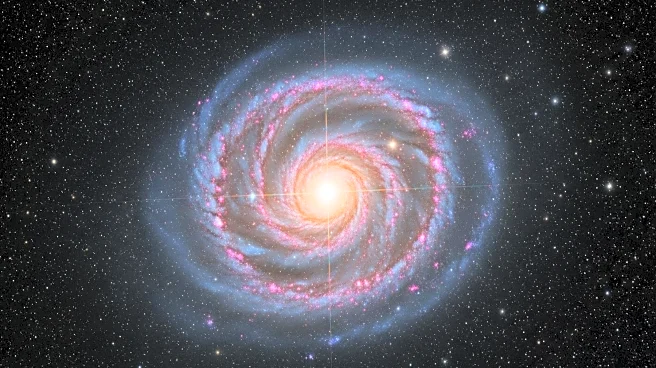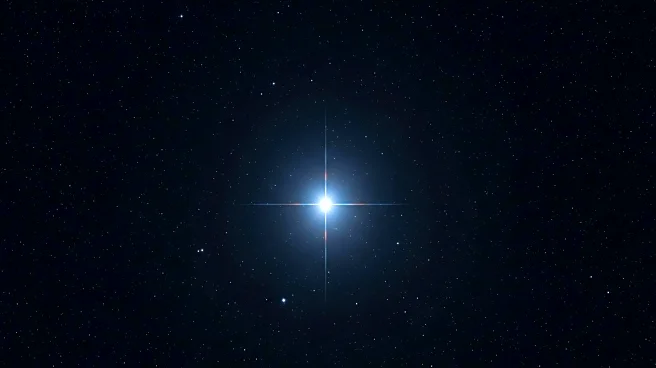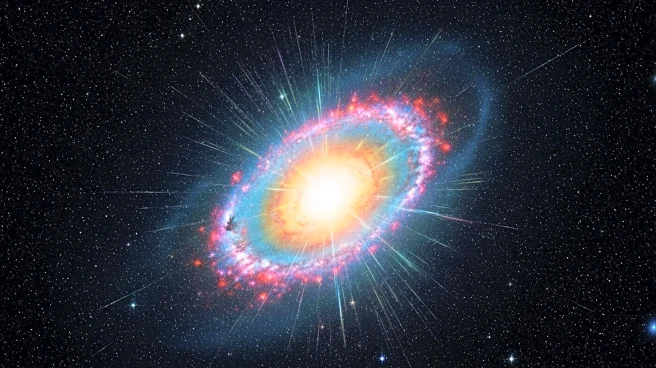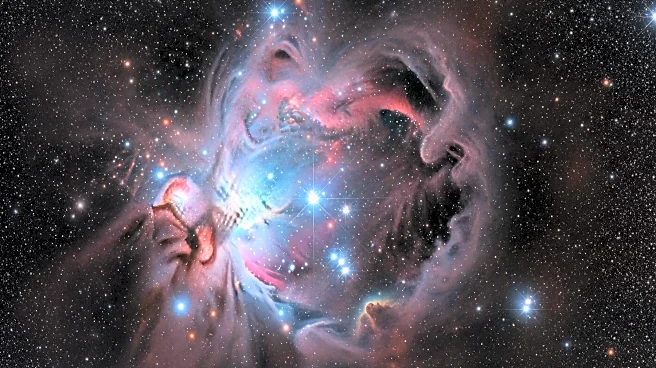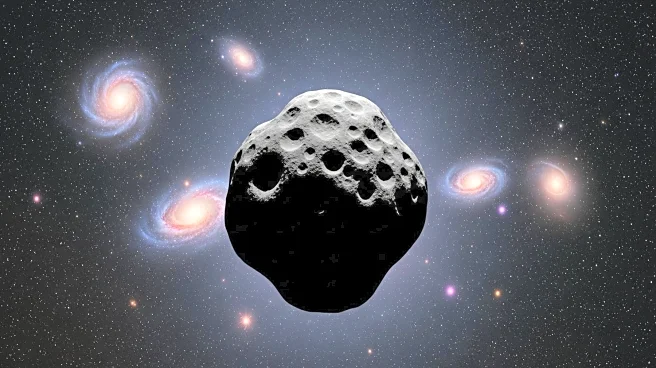What is the story about?
What's Happening?
The Hubble Space Telescope has captured a detailed image of the spiral galaxy NGC 7456, located over 51 million light-years away in the constellation Grus. The image reveals the galaxy's spiral arms, rich with dust and star-forming regions, and an active galactic core. The European Space Agency's XMM-Newton X-Ray observatory has also studied this galaxy, identifying ultraluminous X-ray sources (ULXs) within it. These findings provide astronomers with a cosmic laboratory to study star formation and the recycling of gas into new stars and planets.
Why It's Important?
The observations of NGC 7456 offer significant insights into the processes of star formation and the lifecycle of galaxies. By studying the star-forming regions and the active core, scientists can better understand how galaxies evolve and recycle materials. The presence of ULXs in NGC 7456 adds another layer of intrigue, as these sources emit more X-rays than expected, posing questions about their underlying physics. This research contributes to the broader understanding of galactic dynamics and the role of star formation in the universe.
AI Generated Content
Do you find this article useful?
